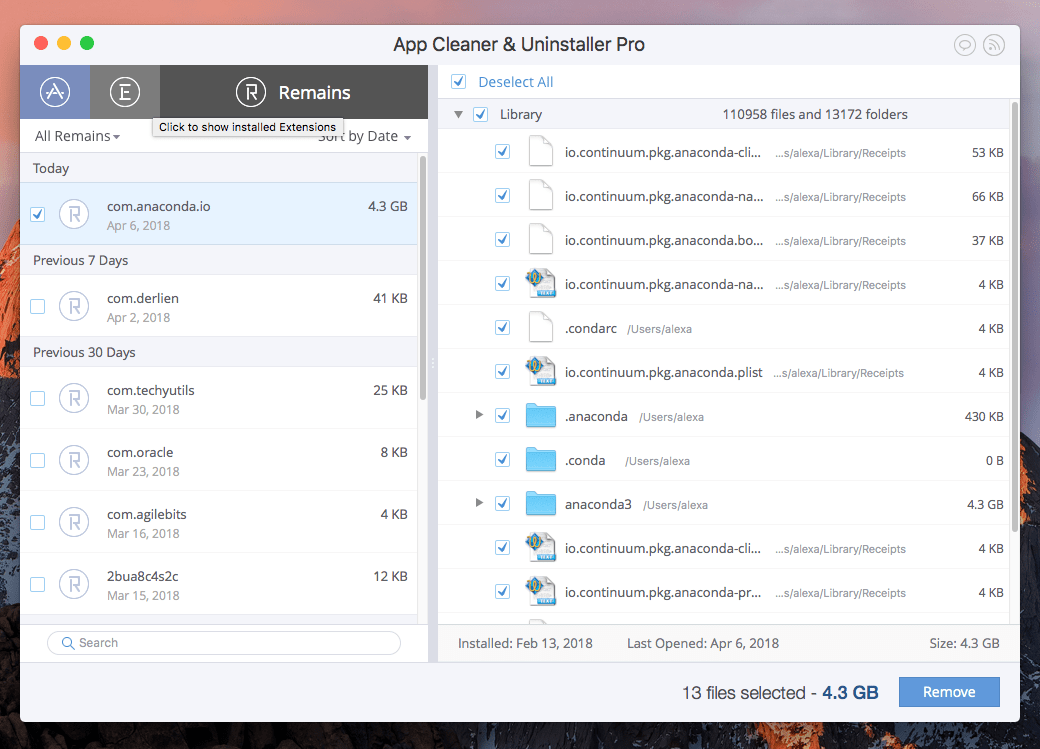
- #Anaconda for mac book how to
- #Anaconda for mac book install
- #Anaconda for mac book full
- #Anaconda for mac book download
- #Anaconda for mac book free
Let us know if you spot any mistakes or needed updates (use the email button on the left side of the screen) – I want to keep this as helpful as possible for people, and new technology tends to change very quickly. Make sure that it works by returning to step 6 and writing commands in your Jupyter notebook. Step 8: If you've followed the above steps, you should be good to go! I usually quit the Terminal ( hold Command and press Q) because I think that, sometimes, updates won't immediately take effect without restarting the Terminal. Note that George also edits the docstring (the text between the """ triple quotation marks """) to better reflect what the function is doing – checking for Apple Silicon. If you want to know more, George Hotz excellently describes the debugging process in his video you can jump to around where he makes the change (47 minutes, 30 seconds) here. I recognize: this process is a very "do as I say and don't ask any questions" process.
#Anaconda for mac book full
The full line should look like this when you are done: In that return line, use your arrow keys to navigate all the way to the right-hand side of that line.The return line is what we are going to edit. Use your arrow keys to navigate to def _use_appnope(), which is the first function toward the bottom of the screenshot above.Type nano filepath /ipykernel/eventloops.py where filepath should be the specific filepath that takes you to that specific eventloops.py in the ipykernel folder.The important thing is that you find the eventloops.py file.) You will make one change to this file. (On my system, it is lib/python3.8/site-packages/ipykernel/eventloops.py, but yours may vary slightly. You will need to use the Terminal and/or Finder to find a filepath in your system that ends with ipykernel/eventloops.py. Step 7: Thanks to this link and user burakozdamar publicizing George Hotz' YouTube video, we learned a workaround that will stop your Jupyter notebook kernel from.
#Anaconda for mac book free
Skip to the bottom for a note about TensorFlow (if TensorFlow is what you care about) or feel free to check out some of our other posts, mostly about computer vision, here.

The traditional Jupyter interface, with several folders inside. Once you do, then click "New" (on the right-hand side) and open up a Python 3 notebook. Step 6: In your Terminal, type jupyter notebook and hit Return. You want to stop your kernel from repeatedly dying. Fix the Jupyter kernel issueĪt this point, Python and Jupyter should be installed. If that doesn't work, then head here and follow the instructions.
#Anaconda for mac book install
Step 5: If you've installed Python but had trouble installing Jupyter, then go to your Terminal and type pip3 install jupyter. Once you're done, head back up to Step 3.
#Anaconda for mac book download
Note that the normal Anaconda download won't work here, as the M1 computer isn't 64-bit. You'll need to login with your Apple ID and follow the instructions. Step 4: You can install Python by going to XCode Command Line Tools. New Mac operating systems should have it already installed, so if you're finding an error, make sure that there isn't a typo somewhere.

If your Terminal looks like the image directly below and a Jupyter interface opens in your browser like the the second image below, then Jupyter is installed.Step 2: In your Terminal, type jupyter notebook and hit Return. Step 1: Open up your Terminal by holding Command and hitting Space, which should bring up your Spotlight Search. If you know with certainty that you have Jupyter downloaded, you can skip down here.) Check if Python & Jupyter are already installed.

(We'll assume you don't know if you have Jupyter on your computer yet.
#Anaconda for mac book how to
In this blog, we'll walk through how to get Jupyter functional on your M1 computer - starting with the download step and ending with a fully operational Jupyter notebook. 1× Prepping to run a Jupyter notebook on my new MacBook Run a Jupyter notebook on Apple M1 MacĮither you're opening a notebook right now and your kernel instantly dies, or you haven't been able to get a Jupyter notebook operational yet.


 0 kommentar(er)
0 kommentar(er)
